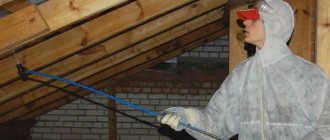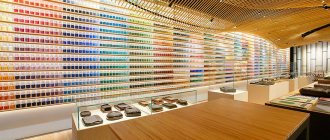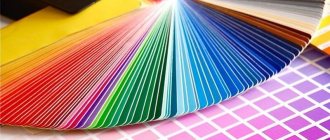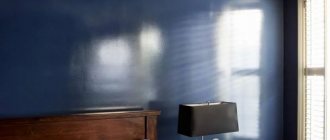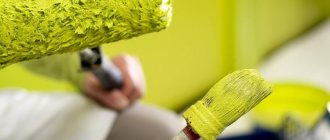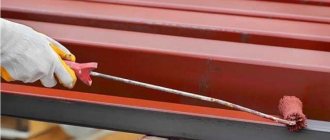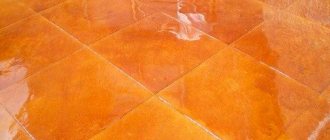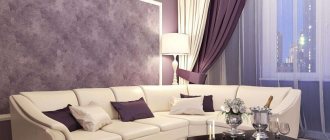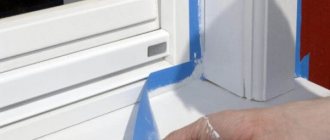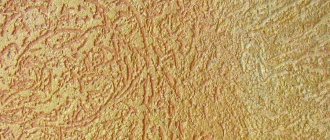July 9, 2020
You have brought to life the interior you have dreamed of for so long. However, it can become boring after a few years. You look at the same wallpaper and furniture, but thoughts about a change of scenery creep into your head. The interior requires changes, but the wallet does not tolerate significant expenses. How to be? You can’t really touch the walls, but you can always refresh the look of the furniture. It is the basis in the house and forms its own unique style. It is not necessary to radically change anything. Just choose the color you like and the desired method of applying paint. It's not as difficult as it seems at first glance. Painting it yourself will not be a problem, you just need to understand some issues. In this article, we will look at the important aspects that you need to know before starting work. Let's get started.
The case when grandiose changes are not needed. Leave the decor alone, do not move the sofa from corner to corner. Furniture restoration is the best solution. It’s not that expensive, and you can do it on your own, neglecting the help of professionals. Let's list other advantages:
- If you paint it yourself, you won’t have to spend a lot of time shopping around trying to find a design. Unlike ready-made furniture, you can be creative and give the piece the look you want.
- “Second wind” for antiquity. You shouldn’t throw an outdated chair into the trash, because this has long been an excellent field of work for a modern designer.
- Using a brush and paint you can extend the life of the wood. Restoration will be able to increase the service life of the same cabinets and sets, in turn, this will help save your money.
- Large selection of paints and varnishes. We will return to this point later.
It is too early to consider choosing a brush and basic materials. Let's talk a little about the surface. It varies, so there is no universal approach. Take this into account.
Conclusion: first, it is important to choose the right paint and method of applying it.
Let's look at a few of them. This will come in handy later when examining in detail the process of painting furniture.
- Chipboard and laminated chipboard
An inexpensive material that is made from small particles of wood, such as shavings. The elements are connected using resin. When covering a polymer film, laminated chipboard is obtained. Such furniture is not only moisture-resistant, but also able to withstand high temperatures. However, the laminated surface can significantly spoil life when applying paint.
How to tell the difference?
Such a surface does not have a three-dimensional pattern, is smooth, and when tapped is more dull.
What's important to remember?
Due to the special properties, attention must be paid to careful preparation. If necessary, apply hot air to the varnished chipboard. This will make it easier to remove the old layer. This step is necessary so that the applied layer of paint can be applied without problems.
Tip: you can use a hair dryer or iron for this.
What types of chipboards are there?
- Laminated
We mentioned this variety above. Laminated chipboard has a reliable layer that makes it much more difficult to apply paint.
- Varnished
Several layers of varnish are applied on top of the slab.
- Laminated
Paper covering that is easy to clean.
- MFD
What we have before us is a finely dispersed fraction of wood, i.e. tiny sawdust connected to each other. The adhesive material used here is paraffin and lignin. This surface can be easily milled. MFD can be classified as an environmentally friendly material, which is a big plus.
How to tell the difference?
If you have an ideal surface that resembles natural wood, then you won’t have any doubts.
What should you pay attention to?
Most often, a decorative coating is required on top.
Choosing what paint to paint furniture
Painting furniture will require 3 components - primer, paint and topcoat. We'll tell you what you might need to implement your idea.
Primers
In another way, the composition is called a primer. Its task is to increase the adhesive properties of the base, plus to saturate the upper layers of the material to prevent overconsumption of the coloring composition. To simplify the application of a decorative paint layer, you need to select a primer shade that is as close as possible to the color scheme. This way, when applying paint, the primer will not glow from under the finishing layers. This will allow you to get the result with less paint.
Stains, varnishes, waxes
To emphasize the structure and restore the attractive appearance of wood, waxes, varnishes and stains are used.
Varnishes can be transparent and colored. The former form a beautiful protective layer that prevents damage to the decorative coating. The shade of the varnish can also imitate valuable species.
Waxes can be solid, liquid, colored, for external and internal use. A velvety film forms on the surface. Waxing strengthens the structure, prevents moisture and the development of fungal colonies.
Stain - also allows you to emphasize the texture and can imitate the shades of valuable wood species. An alternative to stain can be drying oil and shellac.
Paints
A composition with colored pigment is applied to the base, completely covering the structure and original color. For each type of material you need to choose a specialized paint. For example, for work on wood, plastic or metal, the paints will be different. Manufacturers offer a large number of shades. You can also create different surface effects - matte, glossy, satin, textured. It is important to take into account the resistance of a particular paint to abrasion, hiding power, and ease of application.
If the furniture will be installed in a residential area, choose environmentally friendly paints, for example, those containing milk. Texturizing products also provide an interesting effect due to special fillers.
Review of coloring compositions that will be useful to you
It is worth clarifying that one piece of furniture may require several paints and varnishes at once. But don't worry, it won't incur significant costs. It is possible to choose inexpensive but high-quality paint.
- Acrylic paints
They are used most often. And for good reason. Acrylic can be diluted with water to obtain the desired shade, in addition, the composition is resistant to damage. It dries quickly, so the application process does not take a long time.
Tip: Expensive acrylic paints have virtually no odor and are absolutely harmless. If you need to make changes to the interior of the children's room, we recommend choosing this option.
- Base paints in light shades
They remain popular due to their low price. White paint is often applied over the base color. After drying, an interesting gradient is obtained.
- Oil paint
Suitable for creating a matte effect. It is not particularly environmentally friendly, it has a pungent odor when used, so it is recommended to use one based on herbal ingredients.
- Water emulsion based on latex
If you have natural wood in front of you, then you won’t find a better paint. It easily paints the surface, while forming a moisture-proof film. Such furniture can be washed without difficulty, without fear that it will swell. The emulsion is odorless. The downside is that it is not resistant to low temperatures.
- Silicone water-based paint
It is worth taking a closer look at this composition when it comes to increasing the life of furniture. This is an incredibly durable coating that is necessary in rooms with high humidity.
Modern types of chipboard coating
Written by Super User on March 26, 2021. Posted in Company News
Particle boards are practically the main material in modern furniture production. They are strong, durable, homogeneous, easy to process, and also affordable. In order to improve consumer performance, manufacturers usually apply a protective coating to chipboard. Thanks to this process, the wear resistance of the plates increases quite significantly. The quality of the finished products will directly depend on what types of chipboard coatings were used. Thanks to it, strength, reliability, appearance are improved, and resistance to changes in humidity and temperature appears.
Can we get to work?
We've sorted out the choice of materials, now let's move on to changing the old furniture. For clarity, we chose two different surfaces: a laminated chipboard cabinet and an MFD shelf.
We will share the easiest and fastest way to color them. Even a beginner can handle this.
First, let's take the necessary tools, namely:
- Several brushes (It is better to buy not the cheapest ones, since there are times when they fall off. This will not have the best effect on the coloring composition)
- Roller
- Masking tape
- Priming
- Sanding cloths
We also took:
- Gray acrylic paint (The most common option, so we’ll focus on it)
- White acrylic
Remember! The lighter the surface, the more difficult it is to paint. This is a painstaking and complex process that requires the application of many layers. If light paint is not necessary for the interior, then it is better to take a different color. This will make it easier for you
task.
- Oil paint for wood
- Varnish
The entire handmade transformation process is divided into two stages:
Furniture decoration
Decorating such material is not very easy. There are many recommendations for creating a Provence style, but achieving the effect that is obtained on furniture made of wood, plywood or MDF will not work. This is explained by the fact that chipboard products rarely have the required appearance.
Using simple devices on chipboard furniture you can create true masterpieces
You can diversify the interior in the following ways:
- Paint the countertop or dresser fronts white and other front parts black. For this, paint with a glossy finish is used. The technology is completely the same as described above, but the difference is that three layers of varnish are applied to the parts. The first layer is left untreated, and subsequent layers are sanded and polished.
To work using the Decoupage technique (artificial aging), special paints are used
- Aging. To create this effect, after laying the base coat, apply a darker color of paint with a brush. The movements should be sweeping and slightly uneven; a diluted white compound can be applied on top. Everything is fixed with varnish.
Before repainting chipboard furniture, it is recommended to experiment a little. This will allow you to evaluate the result and, possibly, choose a more suitable decoration option.
Preparation
First things first. We take a wooden cabinet. If this is required by external indicators, then we remove dirt and dust from it. Furniture can be disassembled for convenience or only those fragments that need to be repainted can be removed. In our case, this is not required due to the small size of the surface. We immediately move on to the next stage. We take several sheets of sandpaper (sandpaper): one should be more grainy and rough, the other smooth. Sanding the layer is necessary in order to remove the varnish. We create a rough surface and the paint adheres better. This is a guarantee that the material will not fall off over time.
We go over the entire surface of the furniture with sandpaper. We are not afraid to leave scratches and other small damage; this will not be visible during painting. Next we use smooth sandpaper.
What about the inside of the bedside table? Since we chose a quick painting method, we will leave it unchanged (due to its inaccessibility). Cover the surface with masking tape. This way you can avoid leaks from the outside. At the end of the work we will remove it, leaving a clean edge.
Now you can add primer to avoid chipping. The varnished surface is somewhat reminiscent of plastic, onto which it is very difficult to apply paint, so we distribute the material in a dense layer using a brush or roller. We wait for complete drying, and then check for integrity. The main thing is that nothing falls off upon contact with your hand. Only then can you proceed to coloring.
Chipboard furniture: how safe is it? Chemist expert explains
Member of the “Expert Community” of Roskontrol, chemist Oleg Volkov, answers questions about what risks the use of chipboard furniture in everyday life may pose. And how to choose furniture made from chipboard that will be as safe as possible.
Will new chipboard furniture always have an unpleasant odor?
Of course, this question is also related to the acuteness of smell and preferences in smells, but I would venture to say that new furniture may well have a noticeable and unpleasant odor. This is typical of the materials from which modern furniture is made - chipboard, laminated chipboard, fibreboard, MDF, plywood, etc. The fact is that these materials, despite all the differences in their production technology, contain a wood base (of varying degrees of processing) and a binder - urea-formaldehyde resins, most often.
Phenolic, melamine and other based polymers are also used. All of them contain low molecular weight substances that are gradually released into the surrounding atmosphere. Since the “stock” of these substances in the material is limited, this process occurs with attenuation, that is, the smell of new chipboard furniture will decrease over time.
Decoding abbreviations
Chipboard – chipboard
LDSP - laminated chipboard
Fiberboard - fibreboard
MDF - medium density fiberboard (English: Medium Density Fiberboard, MDF/MDF)
Another thing is that many of them have a pungent odor and are harmful to humans and animals. For this reason, even small concentrations of these substances (formaldehyde, primarily) can cause discomfort, pain in the eyes, irritation of the respiratory tract, etc.
In addition, there is increased sensitivity to these substances, which makes being in a room with new furniture unbearable.
Since the emission of toxic formaldehyde can directly affect the health of consumers, the emission of formaldehyde from chipboards is controlled and is an important parameter for the quality of boards.
Products differ according to formaldehyde emission classes and low-grade materials should not be allowed for the manufacture of furniture.
Moreover, the more resin in the material, the stronger and more durable it is, but also the more dangerous from the point of view of the release of toxic substances!
As for how long this smell can last after purchase, I personally would be wary of the presence of an irritating smell that persisted 2-3 weeks after installing the furniture in the room.
Should you avoid buying chipboard furniture if possible?
Since the question said “if possible,” then yes, furniture made from MDF is preferable to furniture made from chipboard. And more beautiful, as a rule, by the way. And solid wood is even more environmentally friendly. However, furniture made from chipboard can be an acceptable choice. Chipboard is a proven material, the main one for inexpensive furniture.
It will hardly be possible to abandon it, because alternative materials are significantly more expensive. I would not refuse furniture made from chipboard, but I would definitely pay attention to how strong the smell is from a particular product and whether the edges of the chipboard are well covered with film.
It is very important that the ends are sealed well. I would definitely read reviews on the Internet from people who bought products from this manufacturer (furniture makers do not change suppliers of board materials very often).
People will not remain silent if they have problems and troubles due to the release of toxic substances.
Yes, over time the release of harmful substances will stop. The only question is how quickly and how much of them will be released, and what concentrations of harmful substances will appear in the air that people breathe.
In any case, I would recommend thoroughly ventilating the apartment for the first time (several weeks), avoiding, if possible, periods when the flow of outside air will be stopped, because it is in a “clogged” room that it is easier for a concentration of harmful substances to arise that is hazardous to health.
Deterioration in health due to unsafe chipboard furniture
Toxicity is divided into acute and chronic. I don’t think that buying new furniture can lead to chronic intoxication (I note that working in a furniture store or furniture factory is a different matter...)
But if you are unlucky, you may encounter signs of acute poisoning.
If the reaction is associated with an allergy, then the reaction will be allergic - its signs are varied, but every allergic person usually knows the manifestations of his allergy by heart.
If the issue is not an allergy, but rather a high concentration of formaldehyde, then the first reaction will probably follow very quickly in the form of irritation of the respiratory tract, mucous membranes of the eyes and nose, sneezing and coughing.
What technology violations make chipboard furniture unsafe?
Chipboard is controlled by a number of parameters - including tensile strength, fracture strength, swelling (how much the thickness of the sample increases when it is kept in water under certain conditions), etc. Laminated board (chipboard) is controlled even more strictly.
There are a lot of factors that influence the controlled parameters - this is the raw material composition (from what kind of wood the chips are made), and the settings of the equipment that forms the “carpet” (which, after pressing and gluing, will become a slab), and the composition of the glue, and its quantity , and pressing mode, and the like. A decrease in some characteristics can be corrected by increasing the glue supply or changing the mode.
All this can worsen the environmental performance of products. In addition, resins from different manufacturers vary significantly in their ability to subsequently release formaldehyde - this is also an important factor.
Therefore, I would not talk about violations in technology that ultimately lead to a decrease in the safety of furniture - there are simply a number of reasons, each of which can significantly deteriorate the quality of chipboard.
At the same time, if you carefully consider the choice of furniture made from chipboard, MDF, etc., then it is quite possible to avoid causing harm to health.
Painting
The surface of the cabinet is ready. We take our gray paint and apply it to the required areas. Do not make the layer too oily so that it does not crack after drying. It is better to eliminate errors during the next application. Remember that multi-layering can create an interesting pattern. We apply white color on top to create a gradient. Use the brush in one direction.
Important! The base will lighten after drying due to dilution with white. The result will be visible only at the very end.
The cabinet is dry. We apply a varnish that will fix the color and protect the surface from damage. Looks like it was just bought in a store. Ready.
Let's move on to the FSD shelf. Here the preparatory stage is similar. We sand the surface well, only then move on. Protection should not interfere with application.
This time we use natural wood oil to emphasize the texture. We rub the composition with a rag. Apply a small layer to the sanded surface. Remove any excess that is not absorbed after complete drying. It will take 2-3 layers. At the very end, we cover the shelf with acrylic varnish.
Important! It is unlikely that you will be able to make a glossy and absolutely smooth surface at home, because... A spray bottle is used for this. You need to know a certain technology, but if you have already had repeated experience in painting furniture, then there will be no obstacles.
Conditions that you should familiarize yourself with:
- In front of you is an old chair. It has significant damage. You shouldn't leave it. Defective areas are eliminated using putty.
- After purchasing paint, we carefully study the composition and its properties. In addition, the recommendations for use should not be neglected. Some paints do not protect the surface in any way, so other products may be required.
- Don't forget about protection. We did not include masks and gloves in the list of essentials, but this does not mean that you can do without them. Some compositions are toxic, so you should avoid getting paint on your body.
The furniture is dry. In front of us is a new cabinet and shelf for books. It may seem like a small thing, but the appearance of the room has changed. Now you can take on the rest of the interior items, the main thing is to think carefully about the design before doing this. The process turned out to be simple and not at all expensive, and we are not afraid to experiment. What's the point of doing repairs every year? You can limit yourself to painting an old cabinet or table yourself.
Tags:
- Repair
Rate the material:
How to paint chipboard and fibreboard?
The choice of paint is a very important process; the final type of coating depends on this.
Paint for chipboard
The solution is selected taking into account several factors that depend on the type of surface and external parameters. It is recommended to use the following types of compositions:
- Acrylic. This option is well suited for painting particle boards, but has certain limitations. The main thing is that the mixture cannot be applied to an unprepared surface; priming must be performed. The fact is that the composition of such paints is water-based, which is quickly absorbed and can cause destruction of the slab.
The surface is prepared especially carefully for acrylic compositions. Latex. They are also a type of water-dispersible materials. Their use allows for excellent protection of products from moisture. The application technology is similar to acrylic mixtures, but such products have several disadvantages: relatively high cost and labor-intensive removal of the decorative layer.
The synthetic film reliably protects the slabs from moisture. Alkyd. Enamels are a traditional option for such an event. They can be laid without prior priming, but the consumption of the mixture will increase significantly.
Under alkyd enamel, chipboards and fiberboards can withstand moderate humidity
- Stain. It is used as an impregnation to create a certain texture. Using stain for chipboard does not give such an impressive result as when working with natural wood, but it allows you to get a good decorative effect. This option is an excellent solution for chipboard.
- Varnish. This composition has many tint varieties; colorless is used to protect the surface.
The type and color of varnish is selected depending on the operating requirements of the product.A good option is spray paint. But aerosols do not allow painting a large area, so they are used for decoration.
Compositions for fiberboard
Not all types that can be used for chipboard are suitable for fiber boards and panels. For example, water-soluble paints do not have good adhesion to such a surface, since fiberboard contains paraffin, which repels water. That is why, when choosing acrylic mixtures, a deep penetration primer is additionally selected.
On a note! Moisture-resistant chipboards will also require more labor-intensive preparation when choosing water-based compositions.
In addition to water-based emulsion, materials can be coated with the following types of coloring solutions:
The use of budget formulations is justified in most cases - Oily. This variety is used less and less due to toxicity, pungent odor and long drying time.
- Drying oil. It is used as a decorative and moisture-proof impregnation, which is additionally coated with varnish. An alternative could be stain.
Alkyd. A good option that is suitable for all types of products made from wood materials.
For decorative varieties, a quick-drying colorless varnish is suitable.
